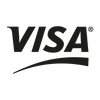When you're considering a cutting solution, Summa from Pozitive should definitely be a contender. As the distributors of Summa in Australia, Pozitive offers a wide range of services including trained technicians for servicing and application engineers for testing, training, and support. Whether you are a start-up or an experienced professional, choosing the right cutting solution involves considering various factors. Not only do you need to determine which characteristics and functions would benefit your company the most, but you also have to select from different types of cutters. We understand that this process can be overwhelming and confusing at times. That's why we have created this guide. By the end of it, you will have all the information you need to make an informed decision about the perfect cutting solution for you.
Understanding Flatbed and Roll Cutters
Before we jump into the details, it's important to understand the differences between roll cutters and flatbed cutters. A roll cutter, also known as a cutting plotter, is a machine used for precise cutting of roll-based materials. Equipped with one or sometimes two types of blades, a roll cutter can efficiently cut various items such as stickers, labels, vehicle lettering, paint protection films and much more.
Discover Roll Cutters
On the other hand, a flatbed cutter, also referred to as a digital cutting table or flatbed cutting plotter, is a specialised tool used across many industries for accurate cutting, scoring, perforating, creasing and routing of a wide range of materials. It can handle both rigid and flexible materials, including cardboard, synthetic and industrial materials, composites, textiles, and more. Flatbed cutters are also super versatile with their tooling, with several options for cutting, creasing, scoring and more.
Discover Flatbed Cutters
Processing Different Material Types
One of the key differences between roll cutters and flatbed cutters is the type of material they can process. Roll cutters are designed to cut flexible materials on rolls, such as vinyl. However, by adding a sheet feeder, like the Tray One for the S1 Series, roll cutters can also handle materials that are not on a roll, like light cardboard or loose vinyl sheets.
Flatbed cutters, on the other hand, are much more versatile. They can handle both flexible and rigid materials, including cardboard, roll, synthetic, and industrial materials, as well as composites and textiles. In addition to cutting, they can also route, engrave, and polish. When considering a cutting solution for industrial applications, we recommend choosing a flatbed cutter as these materials can be more difficult to manage.
Consider the Material and Print Size
The size of the materials and prints you work with can also influence your choice of cutter. Summa roll cutters can handle media up to 167 cm wide. If you need to work with wider materials, a flatbed cutter would be the better option. The largest flatbed cutter Summa offers, the F3232, is 320 cm wide and long. However, with a flatbed cutter, you can cut materials longer than the table length. For example, the F1612 can cut sheets that are a maximum of 160 cm wide but can be as long as you need them to be.
Take Into Account Your Available Floor Space
Your available floor space is an important consideration when choosing a flatbed cutter. Depending on the model, a flatbed cutter can occupy a significant amount of space. The smallest Summa flatbed, the F1612, takes up a bit more than 5 m², while the F3232 requires 18 m² of surface area. However, even with limited space, the smallest flatbed cutter still allows you to cut sheets longer than the cutter itself. This is perfect for companies that work with large sheets yet have limited space. Floor space is not as critical for roll cutters as they are considerably smaller. The smallest Summa roll cutter, the S1 60, is a desktop model that takes up less than 1 m², while the largest roll cutter, the S3 160, has a surface area slightly above 2.5 m².
Consider Your Current and Future Volume of Production
The current and projected volume of production is an important factor to consider, especially when investing in a roll cutter. For low to medium production amounts, we recommend the S One Series. If you work with laminated materials, the S Class 3 Series would be a better choice. For medium to large production amounts, the S Class 3 Series offers faster cutting speeds and top-quality results. It can also crease materials in short runs.
The impact of production volume on flatbed cutters is only significant if you need to produce a large amount of material quickly. Generally, all Summa flatbed cutters have the same speed and power and can handle the same tools. However, the F3232 has a special feature called tandem mode that enhances productivity. With tandem mode, the work area is divided into two sections. After the cutter finishes cutting one piece, it automatically moves to the second sheet in the other area, allowing the operator to remove the completed sheet and place another. This ensures continuous cutting and eliminates the time required to change sheets.
See tandem mode in action here.
When choosing a cutting solution, consider the type of materials you work with, the size of your materials and prints, the available floor space, and your current and future production volume. By evaluating these factors, you can make an informed decision that suits your specific needs.
If you have any questions or would like to see a demonstration of our cutting solutions, don't hesitate to reach out to us. We are here to assist you and provide all the support you need. Contact us today to book a demo or get answers to your questions. Let us help you find the perfect cutting solution for your business!



















































